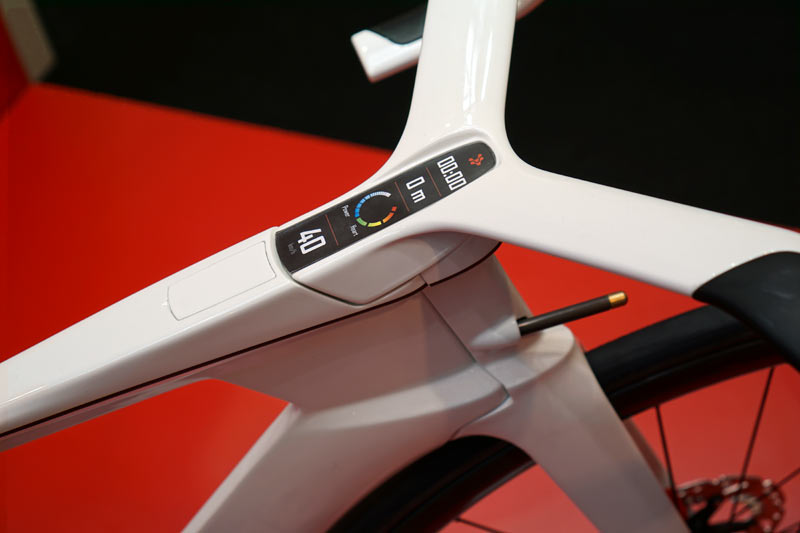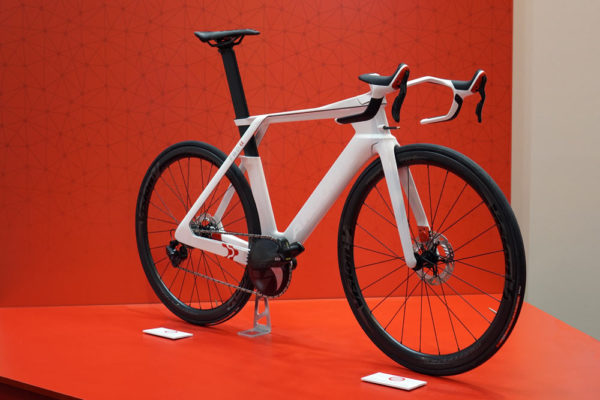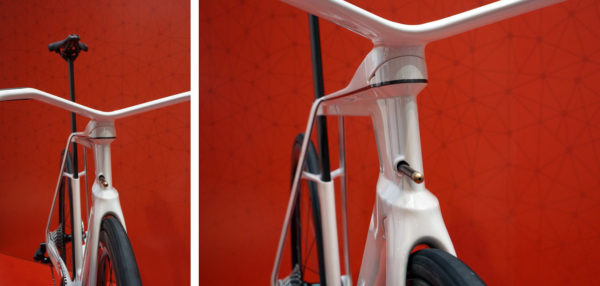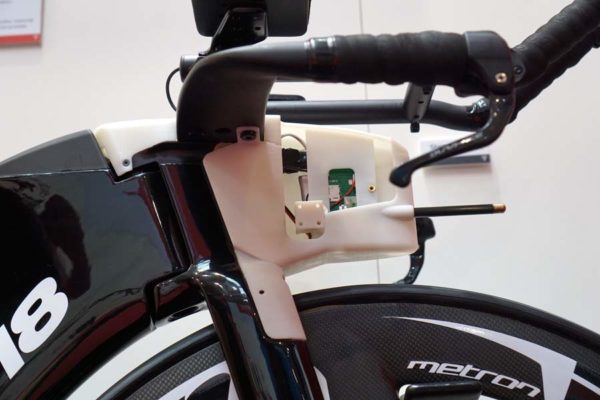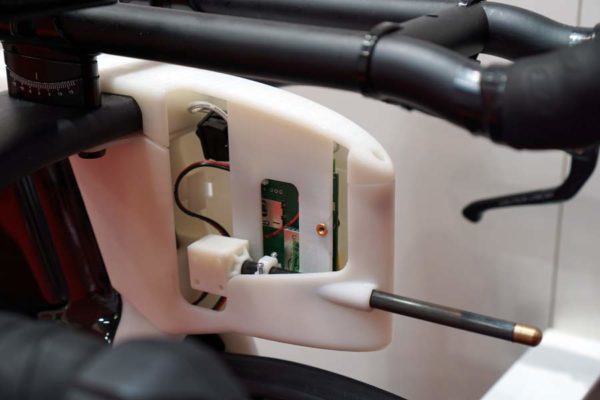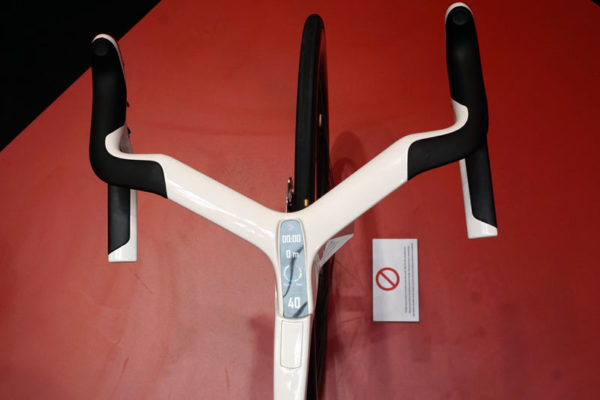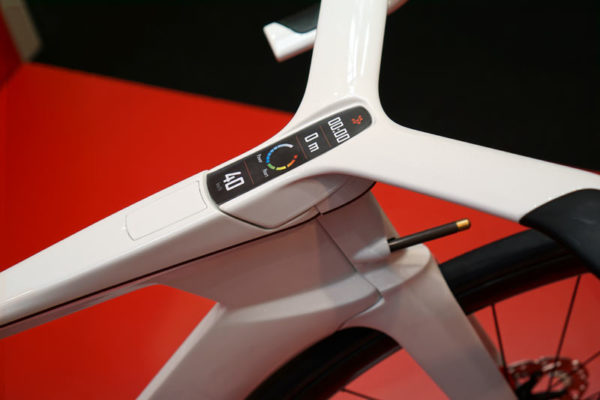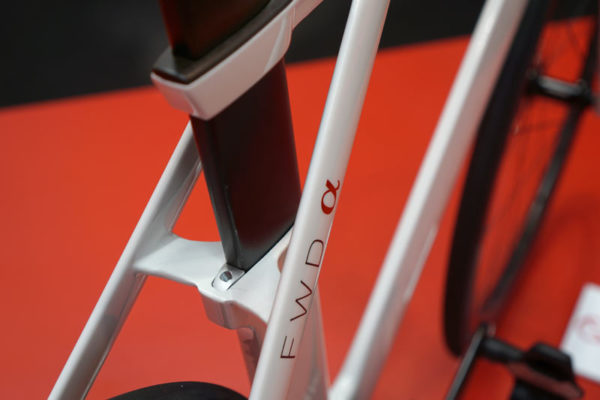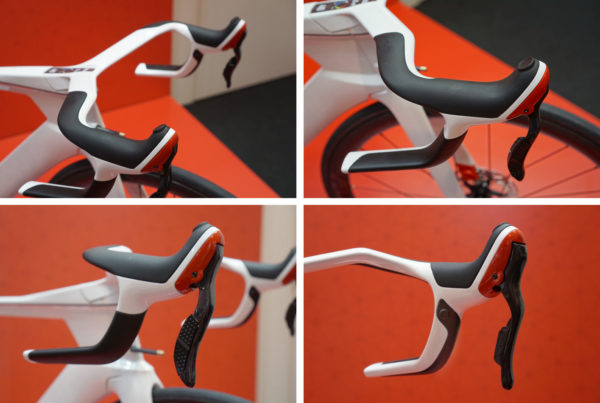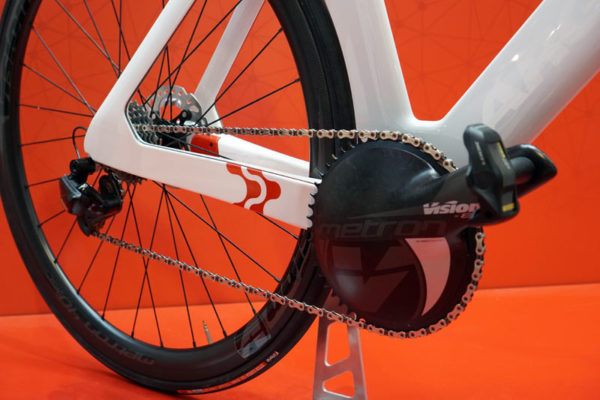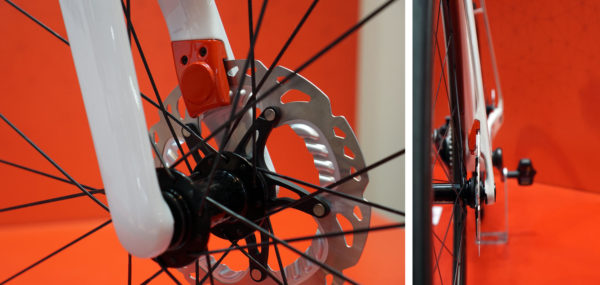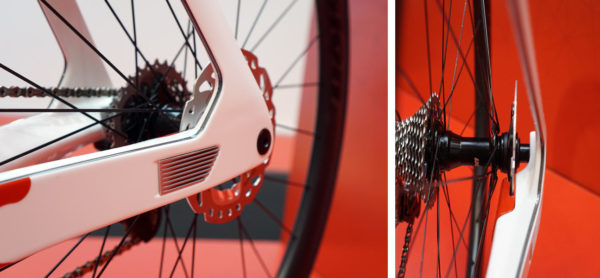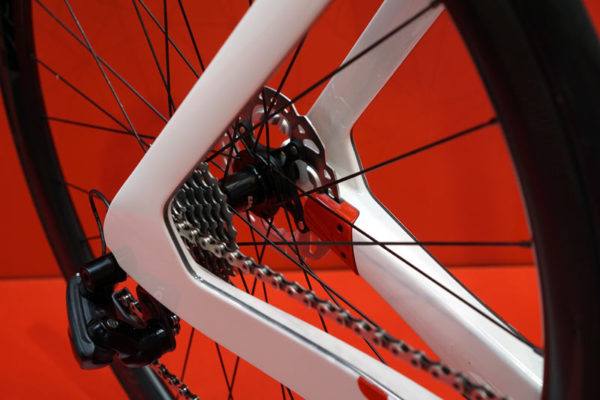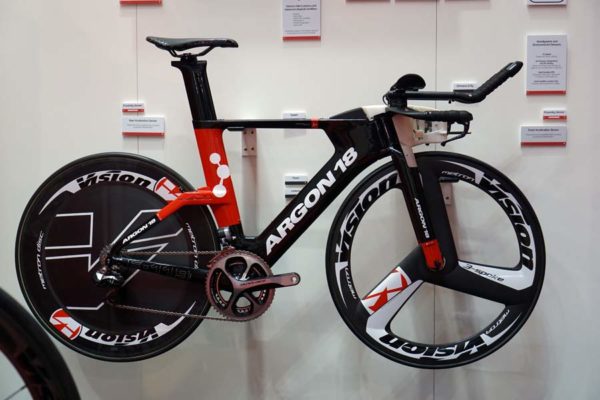Argon 18 won Eurobike for the most technologically advanced prototype with their FWD Alpha aero bike. Not only did the frame integrate electronic shifting buttons, but it completely integrated the hydraulic disc brakes and the circuits and sensors to measure your drag. It’s an impressive project from their FWD (Fusion Works Division), their in-house advanced projects department…
The FWD Alpha bike is an experiment in what can be different. Current handlebars are round because you need to mount a shifter and brake lever on it. But if they’re buttons, the bars can be whatever shape you want. At which point, maybe you don’t need bar tape, you can make custom grip pads. So goes the thinking inside FWD.
The needle protruding from the head tube measures wind speed, much like what you find on jets, but they’re using the data for different purposes. CDA, coefficient of drag area, is like the size of “the parachute” that’s holding you back -meaning you and your bike- and that’s the main thing it’s calculating. There are two options for increasing speed – make more power, or lower your CDA by getting more aerodynamic. It’s complicated math, but if you know wind speed, air density, power, and velocity (speed), then you can work out your CDA.
The electronics also collect shifting data from the electronic shifters, and they add pitch/roll/yaw sensors to the frame and steering, and accelerometers, too. These measure lean and inclination angles and acceleration. They also use a saddle pressure sensor, then you add your own cadence and power meters to capture your output. Your GPS cycling computer (or their system) then tacks on speed and location, all of which is used to help you optimize your entire portfolio of go-fast tricks (aero position, clothing, helmet, bike fit, wheel and tire selection, etc.).
Proximity sensors also help you optimize your drafting distance, or tell if you have a rider behind you.
Imagine rolling out for a ride and the bike telling you that not only are you in good shape for setting a PR or KOM, but that environmental conditions are also perfect. Winning Strava becomes much more scientific.
The concept bike uses a longer seat post that’s slotted through an elastomer at the top tube to let it flex fore/aft slightly, but not laterally, adding a bit more comfort than expected on a TT/aero bike.
Grips are made of the same elastomeric material and could be different densities to suit your preferences.
Flat mount’s nice and all, but this looks even better.
The rear brakes get a slotted vent on the chainstay to help pull cool air over the rotor and caliper.
The project’s been completely built out and tested in prototype form on their E119 Tri bike. Now that it’s proven, they say the FWD Alpha concept bike and electronics are closer to production than you’d think given the advanced concepts.
And the cost for the complete system? About the same as a power meter, the goal being well under $2,000. Theoretically it could be made to fit on any bike, but at first they’ll be integrating it into the frame, most likely on the FWD Alpha first, then moving to other models in their line.
